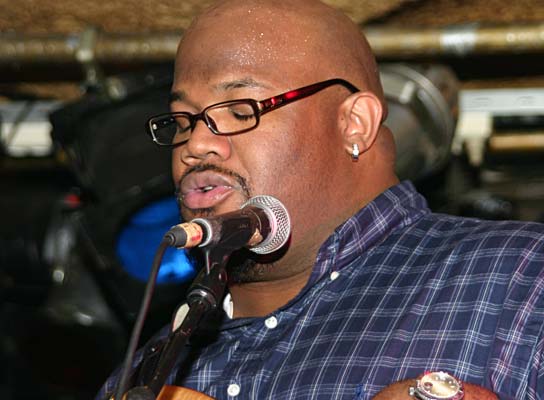Back to Goin' Down South

Why is an album called "The Word" not have any lyrics? Well, that's just one part of the brilliance of this album. The Word is an instrumental album collaborating the Allstars' talent with Robert Randolph and John Medeski. The music itself is a focus on the Gospel tradition, but as in the North Mississippi Allstars tradition, this focus has a new twist.
Chris Chew, the bass player for the North Mississippi Allstars, grew up listening to Gospel music. He claims that his grandmother had a little kitchen radio on the stove relentlessly preaching "the word" to which Chris absorbed and loved. Chris admits he did not start a major branching out of musical tastes until he was old enough to drive and have the car radio to himself. When Chris joined the NMAs after graduating high school, he brought with him this innate talent and love for gospel music, perhaps not knowing the size of the wafer he would be throwing into the stew that is the Hill Country Blues.
The origin of Gospel
In order to understand Chris’ influence on the NMAs, let’s focus on what Gospel really is and where it comes from.
The word, gospel, has several definitions, but most likely its earliest origin is the Greek meaning for “good news” or “good message.” The Middle/Old English translation for the Greek word became God’s spell, meaning “word of God.” Gospel in modern day can also mean “something, such as an idea or principle, accepted as unquestionably true.”
Gospel was formed out of the Christian conversion of West Africans enslaved in the American South. Gospel music partly evolved from the songs slaves sang on plantations, notably work songs, and from the Protestant hymns they sang in church. However, gospel music did not derive as much from Protestant hymns as did “spirituals.” Gospel music, more emotional and jubilant, also stemmed from the call-and-response singing between preacher and congregation, which became common in black churches. It was a call for obedience to God, avoidance of sin in order to obtain the reward of heaven's kingdom, and a celebration God's love.
Well, regardless of religious belief, Gospel music sticks to a recognizable structure and form. Gospel style makes use of choral singing in unison or harmony, often, but not always, led by a lead singer or singers. The songs are performed with fervent enthusiasm, vigor, and spiritual inspiration, with much ornamentation in the solo vocal lines (the blusier, the better). In the black culture of the first half of the 20th century, gospel music was considered as an opposition to blues and jazz, despite their similarity of origins, and gospel performers rarely sang in nonreligious settings. Later, as all three forms became popular outside the black community, they were less exclusive.
Gospel Structure:
Quick explanation of chord progression: The IV of the IV to IV to I. If you are in the Key of C (which would be our I), the IV chord would be F. The chord that is a perfect fourth higher than F is Bb (B flat), or the “IV of the IV.” So the progression in the Key of C would be: Bb to F to C.
Composer and pianist Thomas A. Dorsey, often referred to as “the father of the gospel song,” played a major role in the development of gospel music. Important gospel performers have included Mahalia Jackson, Sister Rosetta Tharpe, Alex Bradford, James Cleveland, The Swan Silver Tones, The Mighty Clouds of Joy, The Dixie Hummingbirds, and The Five Blind Boys of Mississippi. Pop singers who have been heavily influenced by gospel include Aretha Franklin and Ray Charles . While the greatest era in gospel is widely considered to be 1945-1965, the tradition and the music remain vital in contemporary culture.
To be continued…